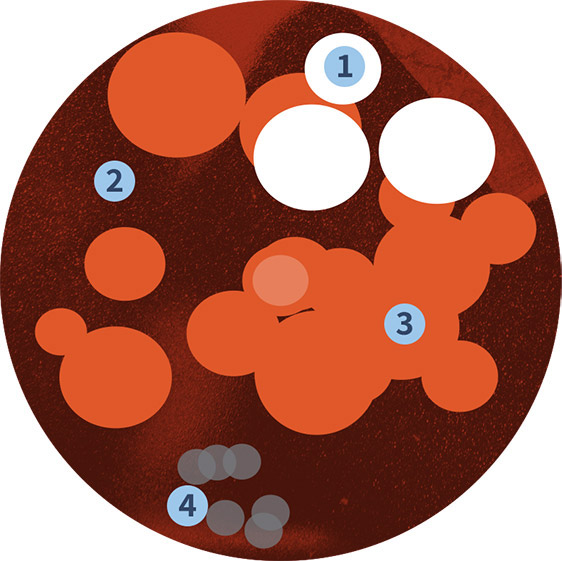Understanding Multiple Myeloma
Multiple myeloma is a rare cancer that affects the blood and bones. It is the second most common form of blood cancer in the United States, yet it is still considered a rare disease. About 30,770 people were diagnosed with multiple myeloma in 2018.
Who is at risk?

- 1.5X more likely in men vs women
- Most often diagnosed at ages 65-74
- 2X as common in African Americans and tends to be diagnosed at a younger age
The good news is that since 2006, more than a dozen new treatments or combinations of treatments have been approved for patients with multiple myeloma. People with multiple myeloma are living longer than ever. Over the past few decades, the percentage of people who have lived at least 5 years after being diagnosed has improved by more than 50%. Educating yourself about multiple myeloma and how it’s treated is an important step in getting the care you need.
How does multiple myeloma develop?
Multiple myeloma develops in the bone marrow. Bone marrow is the soft sponge like tissue in the center of most bones. Bone marrow is where white blood cells, red blood cells, and platelets are made.
Healthy white blood cells help your body fight infection and disease. Multiple myeloma affects a certain kind of white blood cell called a plasma cell. These plasma cells are also made in your bone marrow.

- White blood cells: Help the body fight infection and other diseases.
- Plasma cells: A type of white blood cell that helps the body fight infection and other diseases.
- Red blood cells: Carry oxygen from the lungs to all parts of the body.
- Platelets: Help form blood clots to slow or stop bleeding and to help wounds heal.
In people with multiple myeloma, plasma cells grow in an uncontrolled rate. These cells are called myeloma cells. They grow and spread in the bone, leaving no room for healthy cells to grow. They also produce abnormal antibodies that don’t work properly. This condition is called multiple myeloma.

- Red blood cells
- Myeloma cells: Abnormal plasma cells that build up in the bone marrow.
- White blood cells
- Plasma cells
- Platelets
When healthy plasma cells can’t grow and produce normal antibodies, they can’t fight off diseases. This cycle can go on and on and can cause multiple myeloma to get worse over time.
There is no cure for multiple myeloma, but many medical advancements have been made over the past decade. Discuss with your doctors and nurses to develop a care plan that’s right for you.